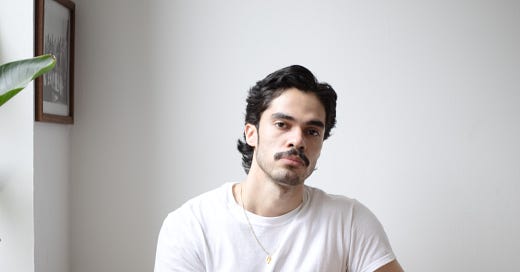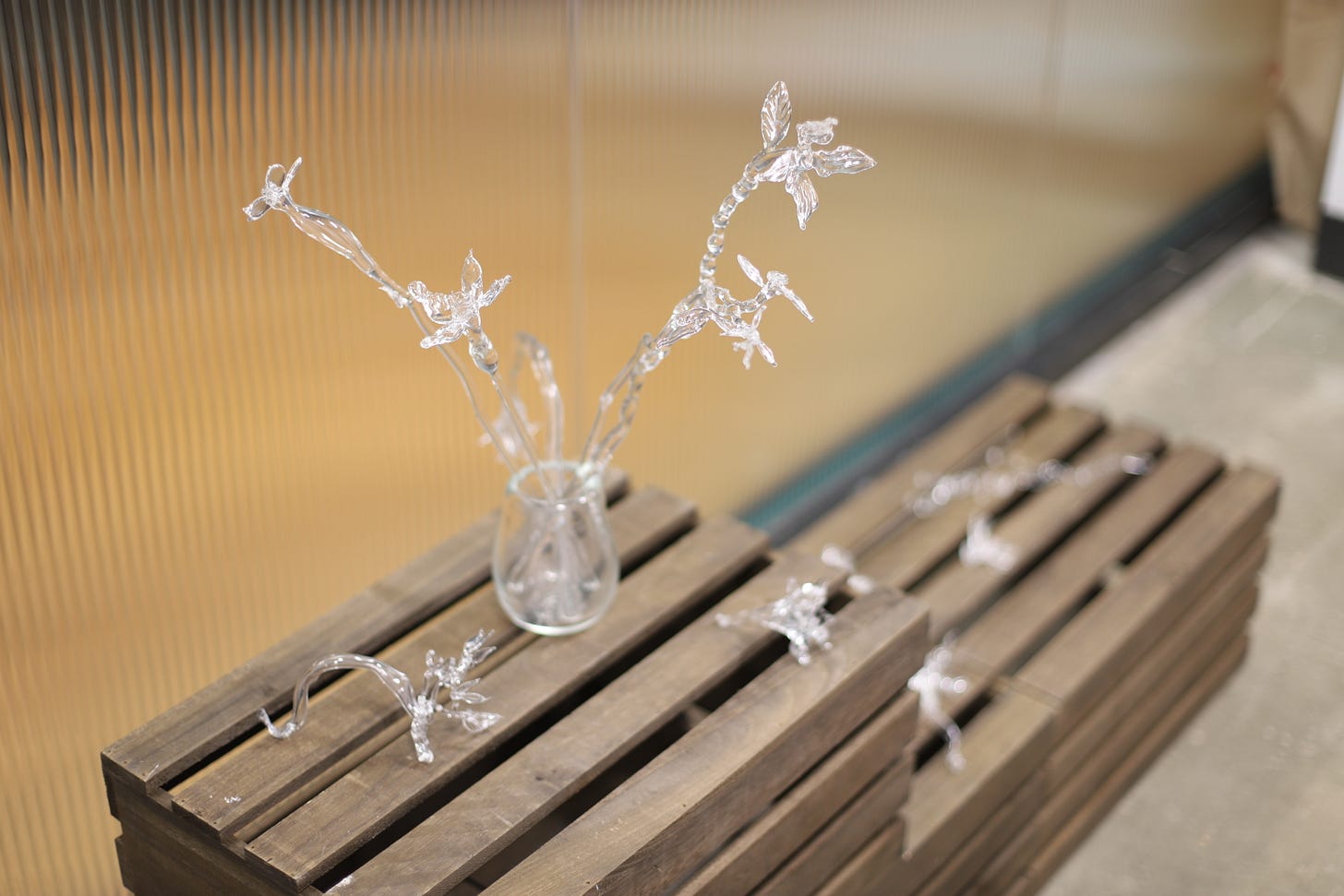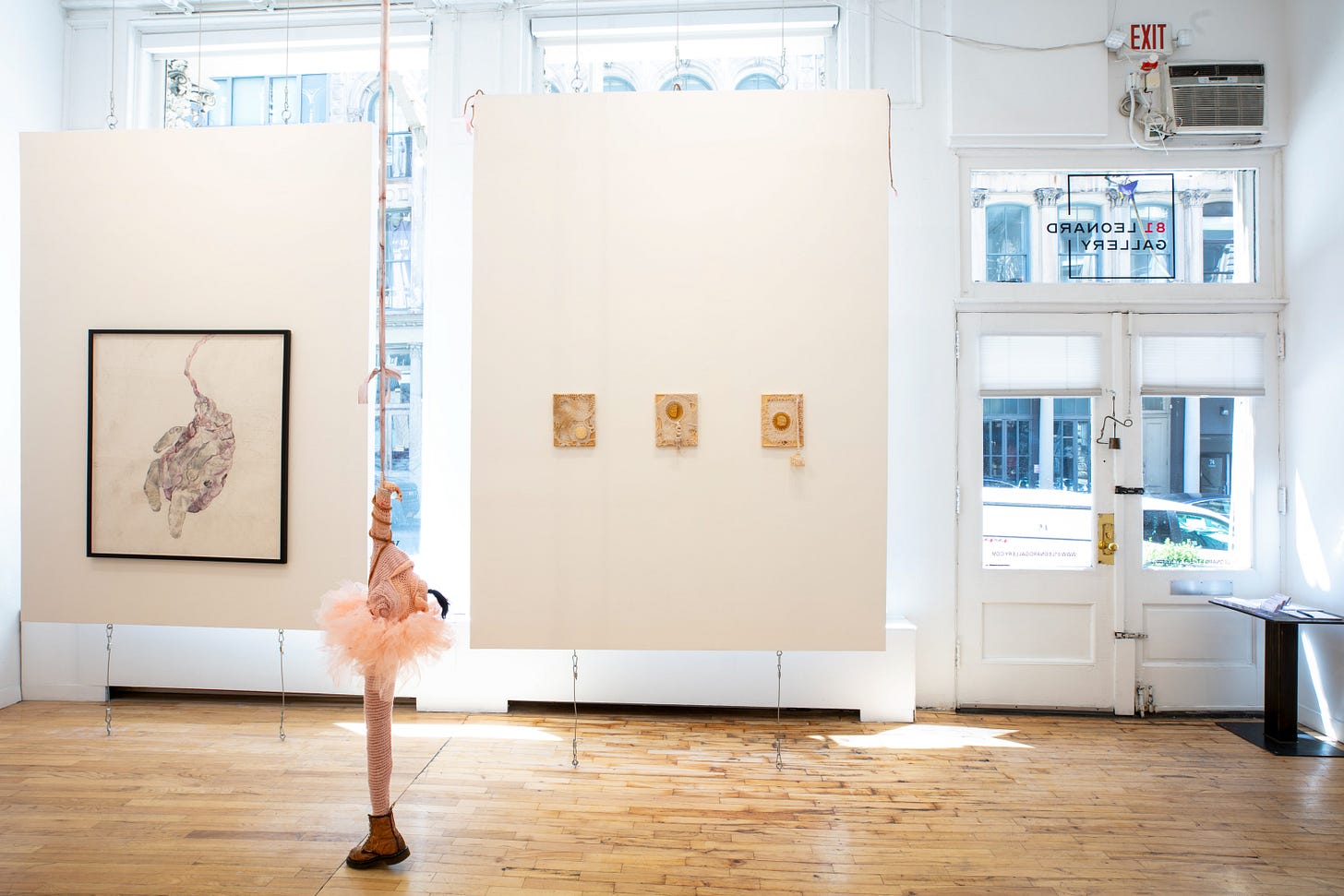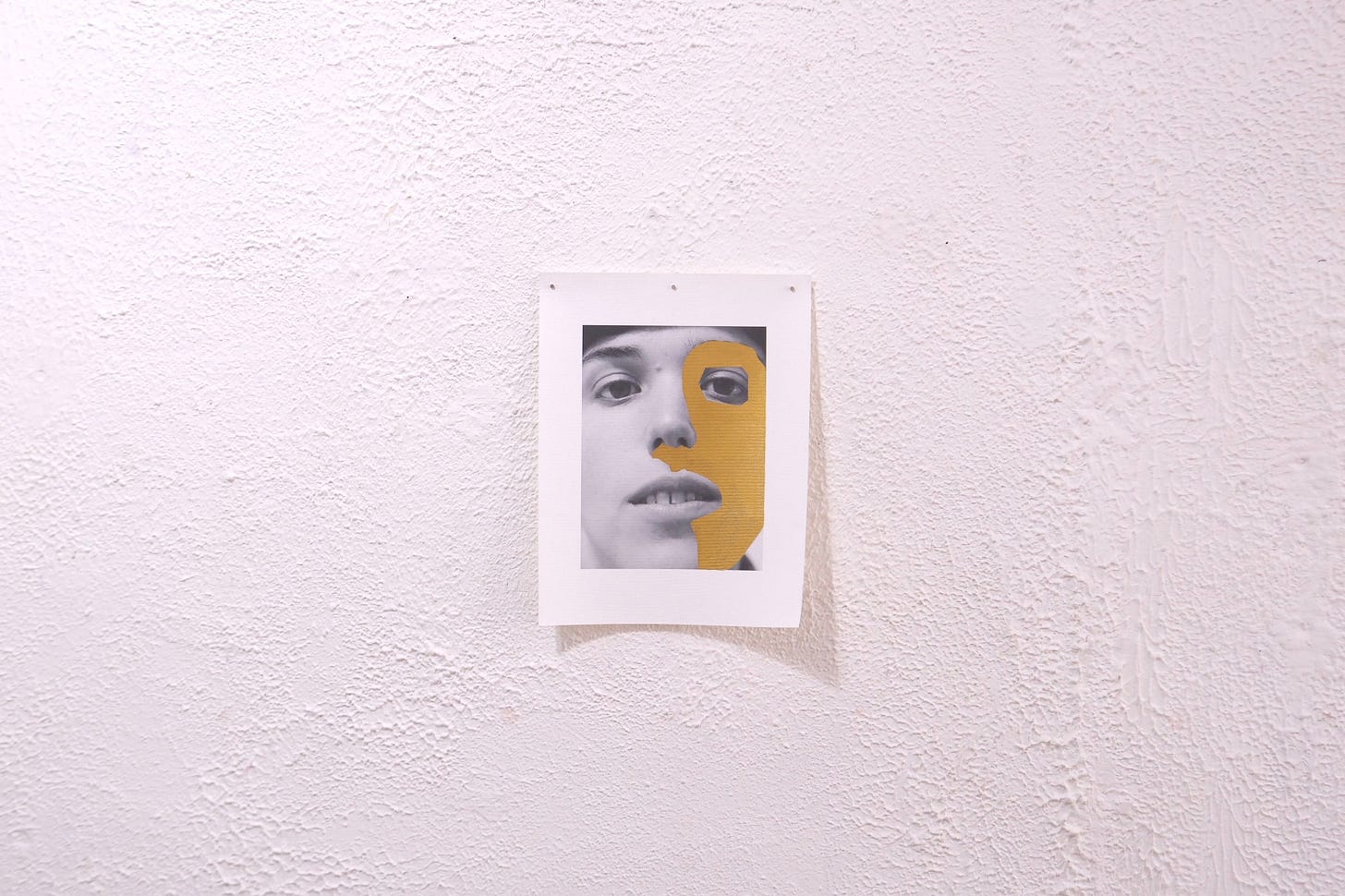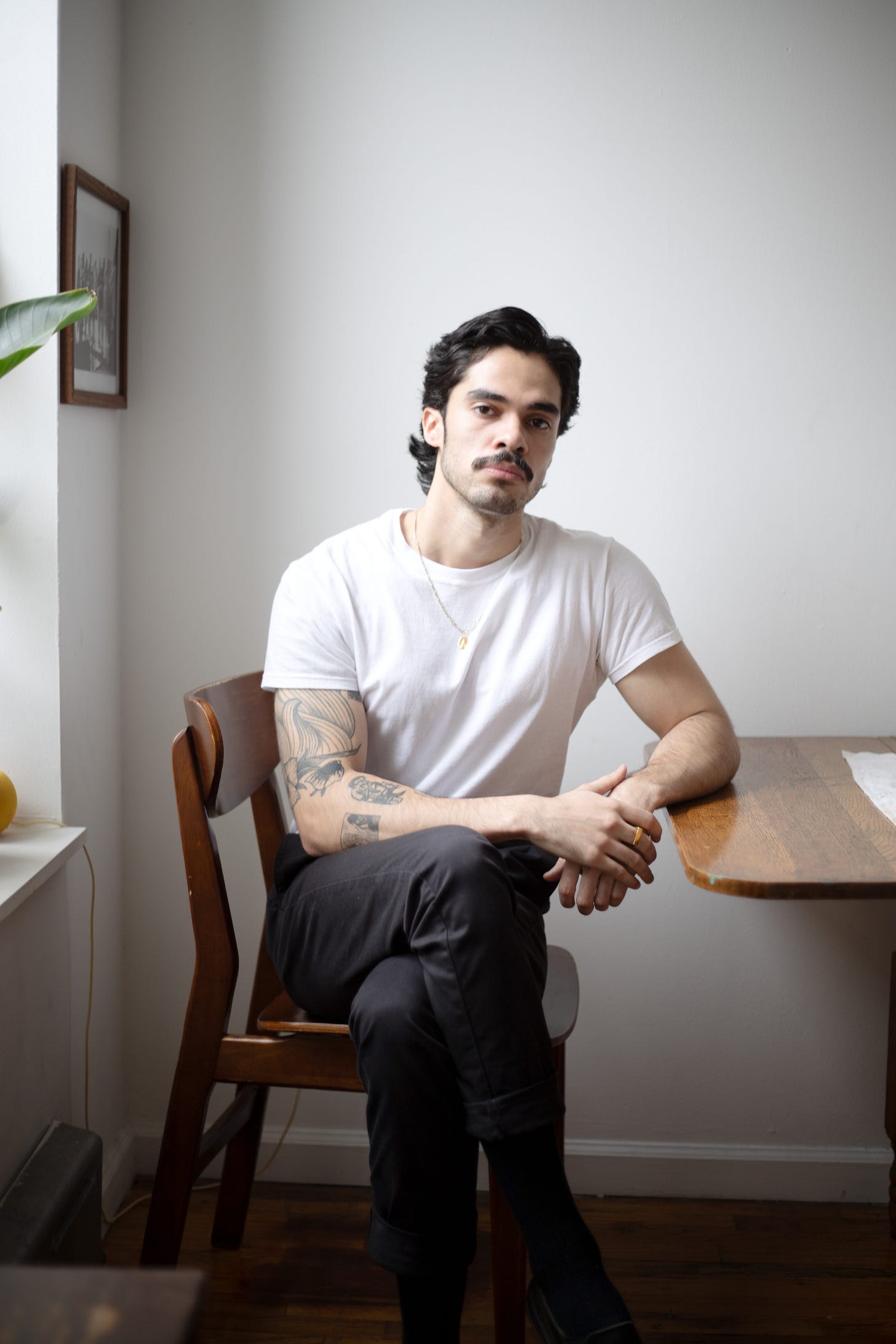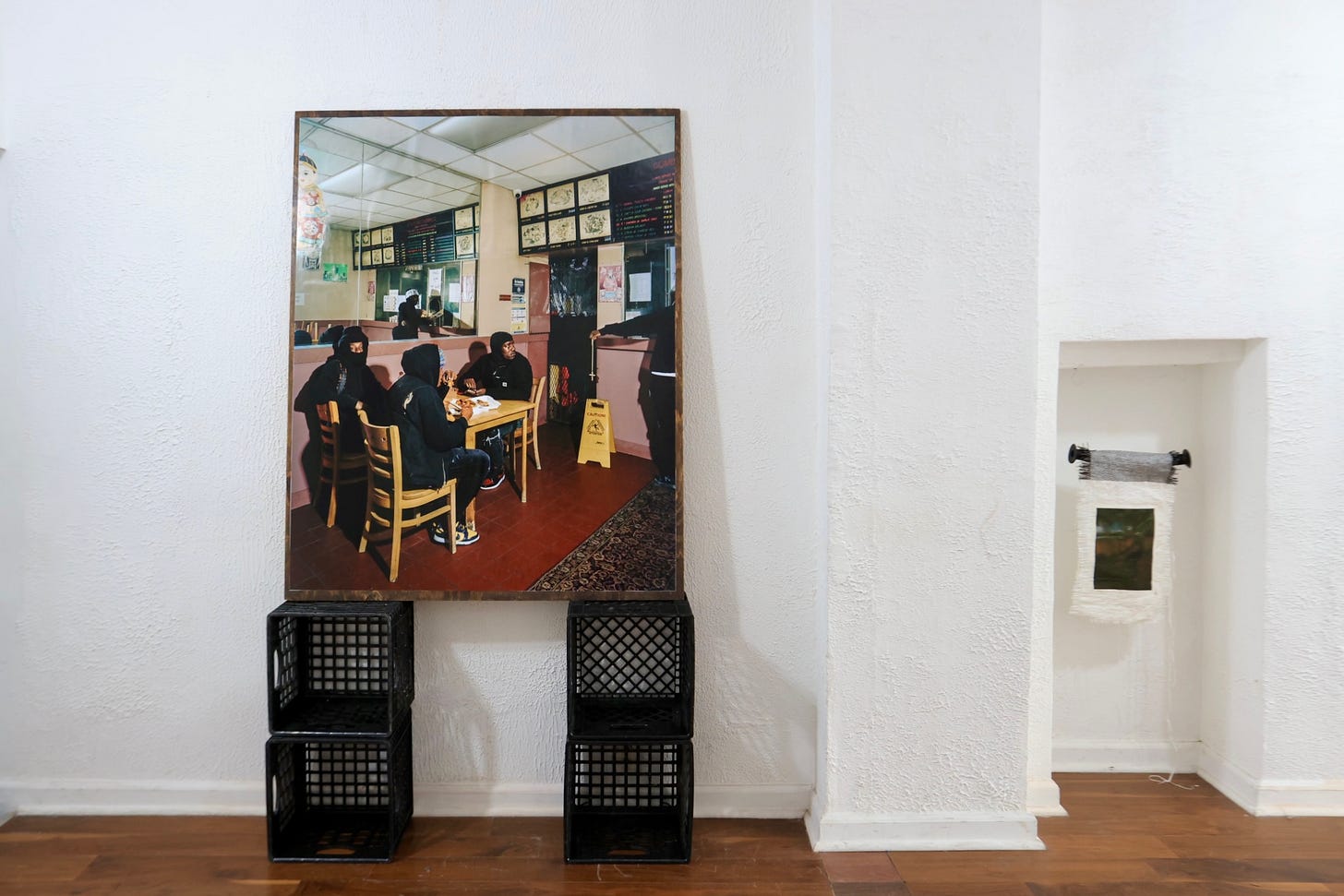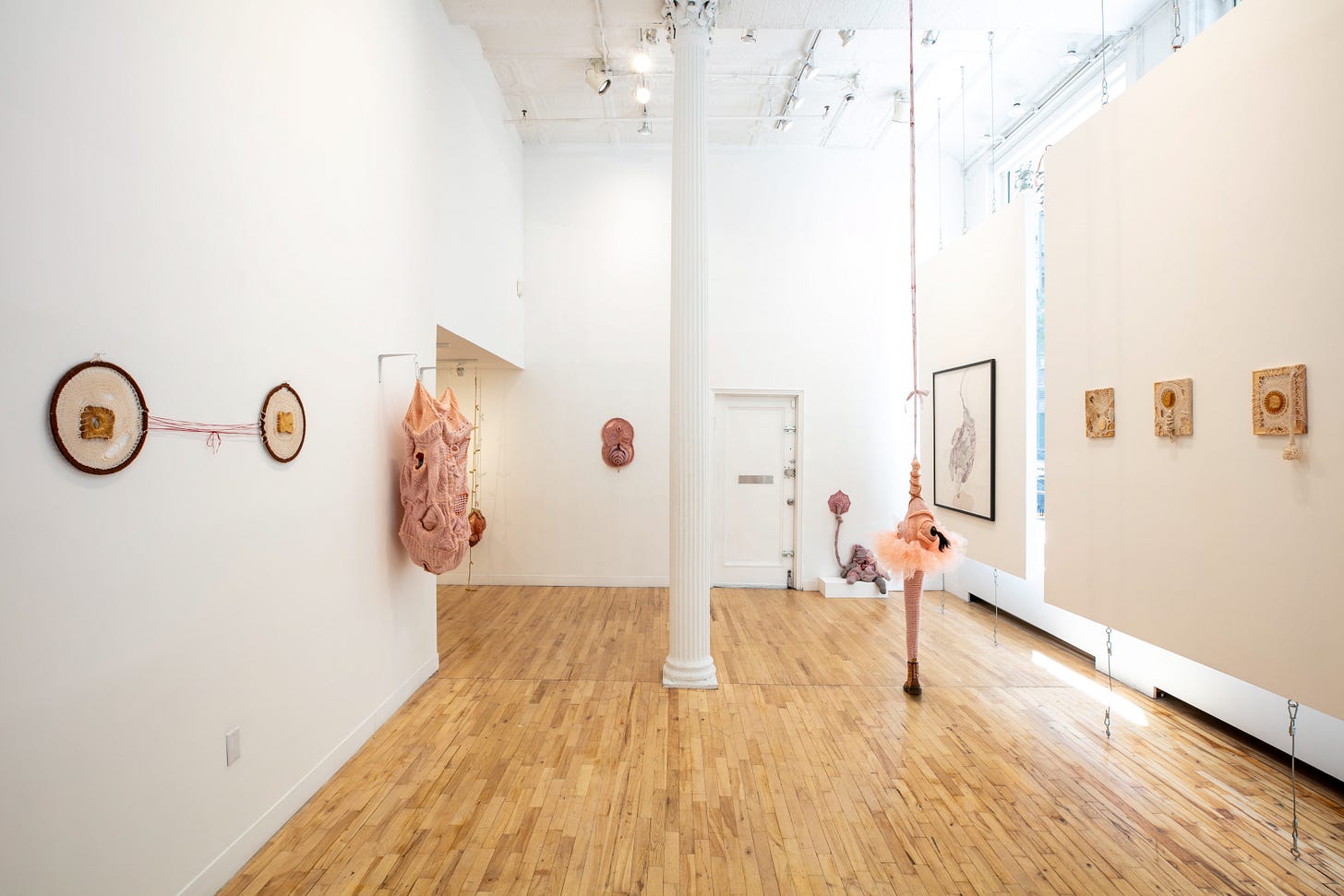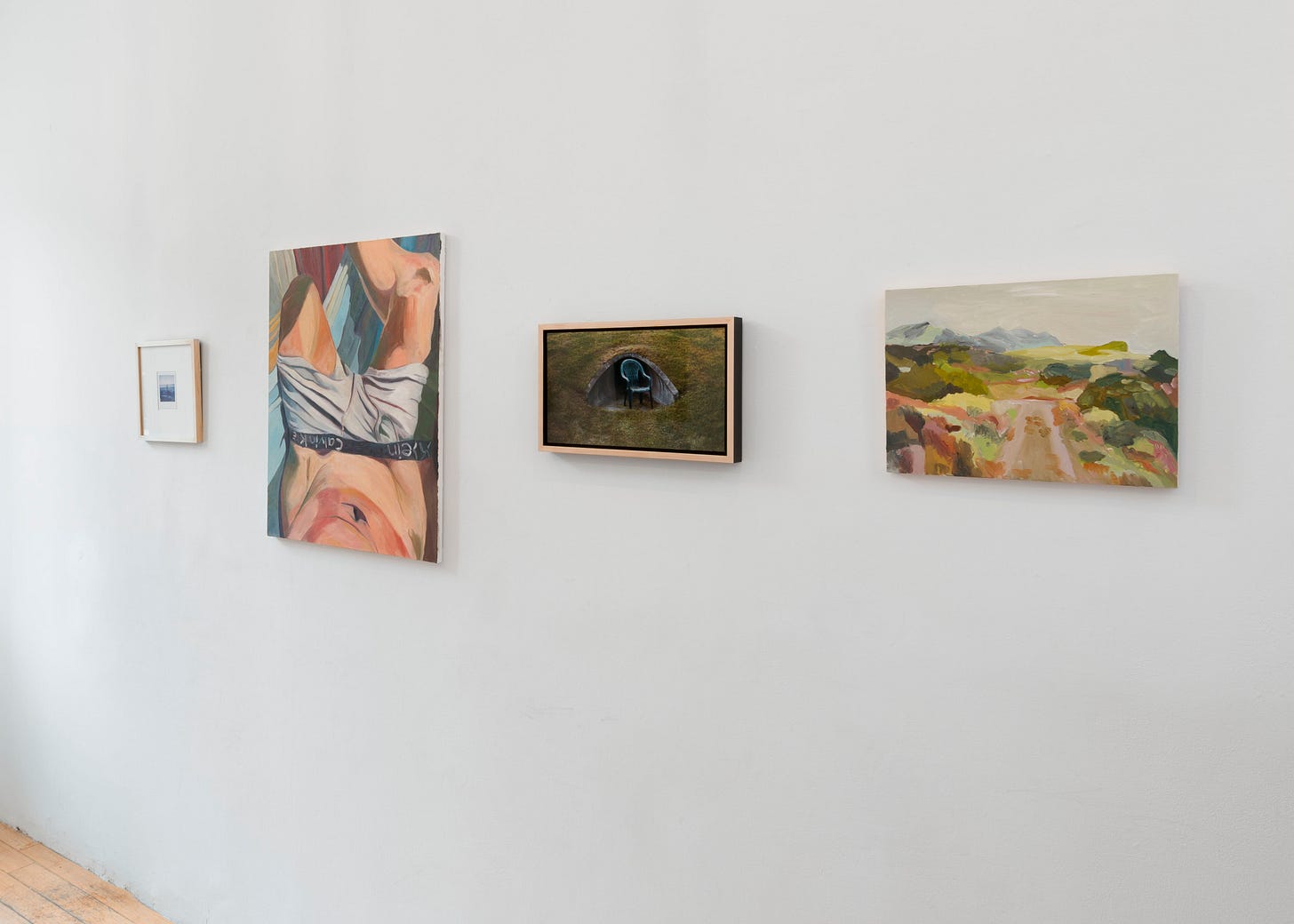Nakai Falcón is an independent curator based in New York. His curatorial practice primarily focuses on collaborations with creatives in POC and Queer communities, where he explores themes of memory, otherness, and the interconnected human experience. In this interview, Nakai invites us to learn more about his background, his work and its connection to his Latin American heritage, as well as his most recent curatorial project.
Q: Can you tell us about your background and how did you come across curating?
Nakai Falcón: My interest in curating started late, during my undergraduate studies in SUNY Purchase.
I originally had gone to college to pursue Anthropology because I was attracted towards learning about other cultures, communities, and the way people grow within different cultural spaces. My interest in the subject came from a place of feeling something fragmented within my own identity as someone who is Puerto Rican, Mexican and Cuban and coming from three generations back of folks living between El Barrio, Harlem, and the South Bronx. I always felt a bit distanced from that kind of lived experience everyone else in my family had gotten, I’d only get it from visits back to the city to see my family.
My college really nurtured visual and performative work, so I was near so many creatives and it had me thinking a lot more about visual arts. As a result, I developed an inclination to explore Puerto Rican artists and cultural initiatives, leading me to discover that the visual art lens offered me an avenue to delve into my own culture.
During my sophomore year, I took my first art history course in Italian Renaissance, and it was the first time I was graded ‘F’ on anything, even though I loved the subject. I felt like I was late in the game, while everyone in my class already had figured out, they wanted to become artists or go into museum work. So, when I finished my degree, I picked up on all the internships I could, working with art spaces between galleries, foundations, and museums. I always knew I was gravitating towards nonprofit art spaces. I'm very attracted towards foundations that tend to focus on artists legacies, all those kinds of spaces that really look to preserve the sentiments of the artist, but then allow them to be a resource for communities. It was during my first internship with an Italian art foundation upstate, that I found out about the role of a curator and how the position involves sharing a certain message or idea to the public via exhibitions. I immediately thought: “That's the kind of thing I think I want to do.”
As I was developing my own curatorial lens, I realized that I was gravitating towards photography. I’m attracted to photos that really capture glimpses into everyday life. On top of that, I was really gravitating towards ideas of outsider work and otherness. I think that kind of interest explains itself, as somebody who kind of felt a little bit outside of my own cultural upbringing, there was something interesting about artists that were touching on subjects that don't necessarily fit the status quo or agenda that their own cultural backgrounds necessarily entail. I think this idea of otherness also has a relationship with memory. A lot of these things have us reflecting on what we’ve seen, where we’ve been, what we’ve been exposed to, and what we would like to see more of.
I’m currently working in the curatorial department at the Whitney Museum, and while not necessarily an artist legacy, it provides avenues for the public to engage with art. Museums are one of the very first spaces for audiences to kind of start getting the appreciation.
“…I developed an inclination to explore Puerto Rican artists and cultural initiatives, leading me to discover that the visual art lens offered me an avenue to delve into my own culture”
Q: What are you looking for the audience to feel/think when they see an exhibition curated by you?
Nakai Falcón: With the shows I curate, I want to focus more on the collective sentiment of the human condition. The idea that it doesn't really matter who you are or what your background is, there are shared sentiments that when you come to the show, you can understand.
In my most recent exhibition curating the solo debut of Ophelia Arc, we explore subjects that are deeply personal to the artist and may even be challenging at first glance for the viewer to understand, but the way she navigates these conversations really lends to an insightful perspective. I want people to show up with their own understanding of the subject, but to leave seeing how much more complicated and layered it is. Also, out of that complexity, there is a simplicity where the viewer pulls out the traces of what is familiar to them. What can resonate from shared experience and relatability.
Q: Collaboration plays a significant role in your practice. How do you initiate and develop collaborations with artists and creatives? What do you look for in potential collaborators?
Nakai Falcón: I think like a lot of us today, it tends to be via social media. In the case of Ophelia, a friend of mine circulated a Hunter college BFA exhibition that was taking place. By that point, I had already seen Ophelia’s work and I was really attracted to it because it reminded me of so many other feminist art historical figures, whether it be someone like Louise Bourgeois or Eva Hesse. Her art echoed so many traits of those works, but it felt so fresh, contemporary, and relevant today.
I introduced myself when I attended the BFA exhibition, and I thought: “I have to figure something out to work with this girl.” Eventually, I just reached out to a gallery space that I had seen a colleague of mine also exhibited at. I loved the space, and I pitched Ophelia's work to them. It was a cold pitch, and they got back to me. They had also seen Ophelia's work when she exhibited at SPRING/BREAK art fair and they said: “This would be fantastic if, you know, she is willing to work with us.” I then reached out to Ophelia to let her know that the gallery accepted to do a solo show for her work.
The collaborative process is very important for me. At the end of the day, with curatorial work, you are providing a service to the artist in terms of nurturing their practice. The idea is to help them get their work out there and communicate it to a larger audience. It's vital for me to not recontextualize their work and stay as honest as I can to their art.
Doing independent shows isn’t easy, they don’t teach you how to organize or pitch them in college. It's always amazing to see galleries open to cold pitches, and to go out of one's way to welcome an artist's work is something special.
“At the end of the day, with curatorial work, you are providing a service to the artist in terms of nurturing their practice. The idea is to help them get their work out there and communicate it to a larger audience. It's vital for me to not recontextualize their work and stay as honest as I can to their art”
Q: Could you share an example of a memorable collaboration you've worked on and how it addressed the themes you explore in your work?
Nakai Falcón: I’ll share on my collaboration with Ophelia, since it was the most recent and was also a serious lift. We had around 23 works, all of them varying in size. What I found interesting about Ophelia, and that we both appreciated, was that we are both coming from Latin backgrounds, but our work doesn't inherently focus on our Latin identity. In Ophelia’s use of fibers and craft, her work deals with memory, but between the woven patterns, materials, and visual iconography, the final product inherently has some Latin qualities to it. Her art deals a lot with ideas that are a tough pill to swallow, especially if you talk maybe to older generations.
Q: In your opinion, what are some of the challenges for POC and Queer artists in the contemporary art world? How do you see your role as a curator in addressing these challenges?
Nakai Falcón: It’s funny but all the shows that I tend to gravitate towards are usually involving POC and queer artists.
I think one of the biggest challenges is when you tend to be anything outside of the status quo. If you are a POC artist or if you're queer or if you're both, it tends to be confined to a specific agenda in terms of being representational. It is helpful to be acknowledged for having the opportunity to have a voice, but a lot of the artists that I work with, don’t want to be just “queer” or “POC” per se. When I’m curating a show, I focus on choosing works that are indicative of the artist’s practice. I want them to be the strongest representation of what the artist’s work entails.
I think it is now a responsibility that falls to the curator to protect the artists that you are working with, because otherwise it is a slippery slope to have artists being tokenized.
“When I’m curating a show, I focus on choosing works that are indicative of the artist’s practice. I want them to be the strongest representation of what the artist’s work entails”
Q: How do you see the future of independent curating? Are there any emerging trends or developments that you find particularly exciting?
Nakai Falcón: I'm always fascinated by curators that end up having independent exhibitions in spaces outside of a gallery. Things like pop ups, where you must bring up time and energy into a space that is only around for a brief window of time. I have so much respect for these events because they are incredibly tough to organize.
I just attended an art collective exhibition from a friend of mine, and it was running for less than a week. The exhibition was in an empty building, which was great because it gives flexibility and freedom to do just what you want. Also, after the pandemic, many alternative exhibition spaces have emerged between apartments, shops, and cellars, which is not a new concept, but never ceases to impress because of the initiative it takes to even plant a flag and say: “We’re showing art here.” Especially as spaces that don’t have any standard financial backing.
When I see people do these sorts of things, I can’t be more impressed. It is art working to its rawest. It is bold, hard to label or fit into a box, and I don’t know if it is necessarily the future, but alternative spaces are some of my biggest interests. I love how architecture and space, interior and exterior, interact with exhibition ideas and concepts.
Q: What advice would you give to someone that wants to follow a similar path to yours?
Nakai Falcón: As a curator, I’d tell everyone to not be afraid to just reach out to people that inspire you. If it is an artist, it can be as simple as just being transparent and say that you would love to work with them someday and to keep in touch.
When you're applying for exhibitions and it feels like nothing is really sticking, you must just keep doing it. Being in the arts is a long game, and having the drive to keep going is essential.
To learn more about Nakai Falcón, visit:
Nakai Falcón es un curador independiente establecido en Nueva York. Su práctica curatorial se centra principalmente en colaboraciones con creativos de las comunidades POC y Queer, donde explora temas de memoria, la “otredad" y la experiencia humana interconectada. En esta entrevista, Nakai nos invita a conocer mejor su formación, su trabajo y la conexión de éste con su origen latinoamericano, así como su proyecto curatorial más reciente.
Q: ¿Puedes hablarnos de tu formación y de cómo descubriste el mundo de la curadoría?
Nakai Falcón: Mi interés por la curaduría empezó tarde, durante mis estudios universitarios en SUNY Purchase.
Al principio había ido a la universidad a estudiar Antropología porque me atraía aprender sobre otras culturas, comunidades y la forma en que las personas crecen en diferentes espacios culturales. Mi interés en el tema vino de un lugar de sentir algo fragmentado dentro de mi propia identidad como alguien que es puertorriqueño, mexicano y cubano y que viene de tres generaciones de personas que viven entre El Barrio, Harlem y el sur del Bronx. Siempre me sentí un poco distanciado de ese tipo de experiencia vivida que todos los demás miembros de mi familia habían tenido, yo sólo la había tenido en mis visitas a la ciudad para ver a mi familia.
Mi universidad fomentaba mucho el trabajo visual y escénico, así que estaba cerca de muchos creativos y eso me hizo pensar mucho más en las artes visuales. Como resultado, desarrollé una inclinación por explorar artistas e iniciativas culturales puertorriqueñas, lo que me llevó a descubrir que el lente de las artes visuales me ofrecía una manera de profundizar en mi propia cultura.
Durante mi segundo año, tomé mi primer curso de historia del arte en el Renacimiento italiano, y fue la primera vez que me calificaron 'F' en algo, a pesar de que me encantaba el tema. Sentía que había llegado tarde, mientras que todos los de mi clase ya tenían claro, que querían ser artistas o dedicarse a trabajar en museos.
Así que, cuando acabé la carrera, hice todas las prácticas que pude, trabajando con espacios artísticos entre galerías, fundaciones y museos. Siempre supe que me inclinaba por los espacios artísticos sin fines de lucro. Me atraen mucho las fundaciones que tienden a centrarse en los legados de los artistas, todo ese tipo de espacios que realmente buscan preservar sus sentimientos, pero que luego les permiten ser un recurso para las comunidades. Fue durante mis primeras prácticas en una fundación de arte italiana en el norte del estado cuando me enteré de la función de un curador y de cómo el puesto implica compartir un determinado mensaje o idea con el público a través de exposiciones. Inmediatamente pensé: "Ese es el tipo de cosas que creo que quiero hacer".
A medida que iba desarrollando mi propio lente curatorial, me di cuenta de que gravitaba hacia la fotografía. Me atraen las fotos que realmente captan destellos de la vida cotidiana. Además, me atraían mucho las ideas del trabajo "foráneo” y la "otredad". Creo que ese tipo de interés se explica por sí mismo, como alguien que se sentía un poco fuera de mi propia cultura, había algo interesante en los artistas que tocaban temas que no encajaban necesariamente en el status quo o en la agenda que sus propios orígenes culturales implicaban necesariamente. Creo que esta idea de "otredad" también está relacionada con la memoria. Muchas de estas cosas nos hacen reflexionar sobre lo que hemos visto, dónde hemos estado, a qué hemos estado expuestos y qué nos gustaría ver más.
Actualmente trabajo en el departamento de comisariado del Whitney Museum y, aunque no es necesariamente un legado para los artistas, ofrece vías para que el público se relacione con el arte. Los museos son uno de los primeros espacios en los que el público empieza a apreciar el arte.
“… desarrollé una inclinación por explorar artistas e iniciativas culturales puertorriqueñas, lo que me llevó a descubrir que el lente de las artes visuales me ofrecía una manera de profundizar en mi propia cultura.
Q: ¿Qué quieres que sienta o piense el público cuando vea una exhibición curada por ti?
Nakai Falcón: Con las exposiciones que organizo, quiero centrarme más en el sentimiento colectivo de la condición humana.
La idea de que no importa realmente quién seas o cuál sea tu origen, hay sentimientos compartidos que, cuando vienes a la exhibición, puedes entender.
En mi exhibición más reciente, curada para el solo debut de Ophelia Arc, exploramos temas que son profundamente personales para la artista y que pueden resultar difíciles de entender a primera vista para el espectador, pero la forma en que ella se desenvuelve en estas conversaciones realmente le da una perspectiva perspicaz. Quiero que la gente llegue con su propia visión del tema, pero que se vaya viendo lo complicado y superpuesto que es. Además, a partir de esa complejidad, hay una simplicidad en la que el espectador extrae las huellas de lo que le es familiar. Lo que puede resonar de la experiencia compartida y la relacionabilidad.
Q: La colaboración desempeña un papel importante en tu trabajo. ¿Cómo inicias y desarrollas colaboraciones con artistas y otros creativos? ¿Qué buscas en posibles colaboradores?
Nakai Falcón: Creo que, como muchos de nosotros hoy en día, tiende a ser a través de las redes sociales. En el caso de Ophelia, un amigo mío difundió una exhibición del Hunter College BFA que se estaba llevando a cabo. Yo ya había visto la obra de Ophelia y me atrajo mucho porque me recordaba a muchas otras figuras feministas de la historia del arte, como Louise Bourgeois o Eva Hesse. Su arte se hacía eco de muchos rasgos de esas obras, pero me parecía tan fresco, contemporáneo y relevante hoy en día.
Me presenté cuando asistí a la exposición de la BFA, y pensé: "Tengo que buscar la manera de trabajar con esta artista". Al final, me puse en contacto con una galería en la que había visto exponer a una colega mía. Me encantó el espacio y les propuse el trabajo de Ophelia. Fue un “cold pitch," pero me contestaron. También habían visto la obra de Ophelia cuando expuso en la feria de arte SPRING/BREAK y me dijeron: "Sería fantástico si ella estuviera dispuesta a trabajar con nosotros". Entonces me puse en contacto con Ophelia para comunicarle que la galería había aceptado hacer una exposición individual con su obra.
El proceso de colaboración es muy importante para mí. Al fin y al cabo, con el trabajo curatorial, estás prestando un servicio al artista en términos de nutrir su práctica. La idea es ayudarles a sacar su obra a la luz, para mí es vital no recontextualizar su trabajo y ser lo más honesto posible con su trabajo.
Hacer exhibiciones independientes no es fácil, en la universidad no te enseñan a organizarlas ni a presentarlas. Siempre es increíble ver como hay galerías están abiertas a recibir "cold pitches.” Que se desvien de su camino para acoger la obra de un artista, es algo especial.
“El proceso de colaboración es muy importante para mí. Al fin y al cabo, con el trabajo curatorial, estás prestando un servicio al artista en términos de nutrir su práctica. La idea es ayudarles a sacar su obra a la luz, para mí es vital no recontextualizar su trabajo y ser lo más honesto posible con su trabajo”
Q: ¿Podrías compartir con nosotros algún ejemplo de alguna colaboración memorable que hayas llevado a cabo y cómo abordaste los temas que exploras en tu trabajo?
Nakai Falcón: Compartiré mi colaboración con Ophelia, ya que fue la más reciente y también supuso un gran esfuerzo.
Teníamos unas 23 obras, todas ellas de distintos tamaños. Lo que me pareció interesante de Ophelia, y que ambos apreciamos, es que los dos venimos de orígenes latinoamericanos, pero nuestro trabajo no se centra intrínsecamente en nuestra identidad latina. En el uso que hace Ophelia de las fibras y la artesanía, su obra trata de la memoria, pero entre los patrones tejidos, los materiales y la iconografía visual, el producto final tiene inherentemente algunas cualidades latinas. Su arte aborda muchas ideas que son difíciles de digerir, sobre todo si hablamos de generaciones mayores.
Q: En tu opinión, ¿cuáles son algunos de los retos a los que se enfrentan los artistas POC y Queer en el mundo del arte contemporáneo? ¿Cómo ves tu papel como curador a la hora de abordar estos retos?
Nakai Falcón: Es curioso, pero todas las exposiciones hacia las que tiendo a inclinarme suelen estar relacionadas con artistas queer y POC.
Creo que uno de los mayores retos es cuando uno tiende a ser algo fuera del status quo. Si eres un artista POC o si eres queer o si eres ambos, tiendes a estar confinado a una agenda específica en términos de ser representativo. Es útil que se te reconozca la oportunidad de tener voz, pero muchos de los artistas con los que trabajo no quieren ser sólo "queer" o "POC" per se. Cuando curo una exhibición, me centro en elegir obras que sean indicativas de la práctica del artista. Quiero que sean la mejor representación de lo que implica su trabajo.
Creo que ahora el curador tiene la responsabilidad de proteger a los artistas con los que trabaja, porque, de lo contrario, es una pendiente muy delicada caer en "tokenizarlos.”
“Cuando curo una exhibición, me centro en elegir obras que sean indicativas de la práctica del artista. Quiero que sean la mejor representación de lo que implica su trabajo”
Q: ¿Cómo ves el futuro de la curaduría independiente? ¿Hay alguna tendencia que te parezca especialmente interesante?
Nakai Falcón: Siempre me fascinan los curadores que acaban organizando exposiciones independientes en espacios externos a una galería. Por ejemplo, pop ups, en los que hay que dedicar tiempo y energía a un espacio que sólo existe durante un breve periodo de tiempo. Respeto mucho este tipo de eventos porque son increíblemente difíciles de organizar. Acabo de asistir a una exhibición colectiva de arte de un amigo mío, que duró menos de una semana. La exhibición era en un edificio vacío, lo que era genial porque da flexibilidad y libertad para hacer justo lo que quieres. Además, después de la pandemia, han surgido muchos espacios de exhibición alternativos entre apartamentos, tiendas y sótanos, lo cual no es un concepto nuevo, pero no deja de impresionar por la iniciativa que hace falta incluso para plantar una bandera y decir: "Aquí exhibimos arte." Sobre todo cuando se trata de espacios que no cuentan con un respaldo financiero.
Cuando veo a la gente hacer este tipo de cosas, no puedo estar más impresionado. Es arte en estado puro. Es audaz, difícil de etiquetar o encajar en una casilla, y no sé si es necesariamente el futuro, pero los espacios alternativos son algunos de los que más me interesan. Me encanta cómo la arquitectura y el espacio, interior y exterior, interactúan con ideas y conceptos expositivos.
Q: ¿Qué consejo le darías a alguien que quiera seguir un camino similar al tuyo?
Nakai Falcón: Como curador, le diría a todos que no tengan miedo de acercarse a la gente que les inspira. Si se trata de un artista, puede ser tan sencillo como ser transparente y decirle que te encantaría trabajar con él algún día y mantener el contacto.
Cuando te presentas a exhibiciones y parece que nada resulta, tienes que seguir haciéndolo. El arte es un camino largo, y es esencial tener el empuje necesario para seguir adelante.
Para saber más sobre Nakai Falcón, visita:


